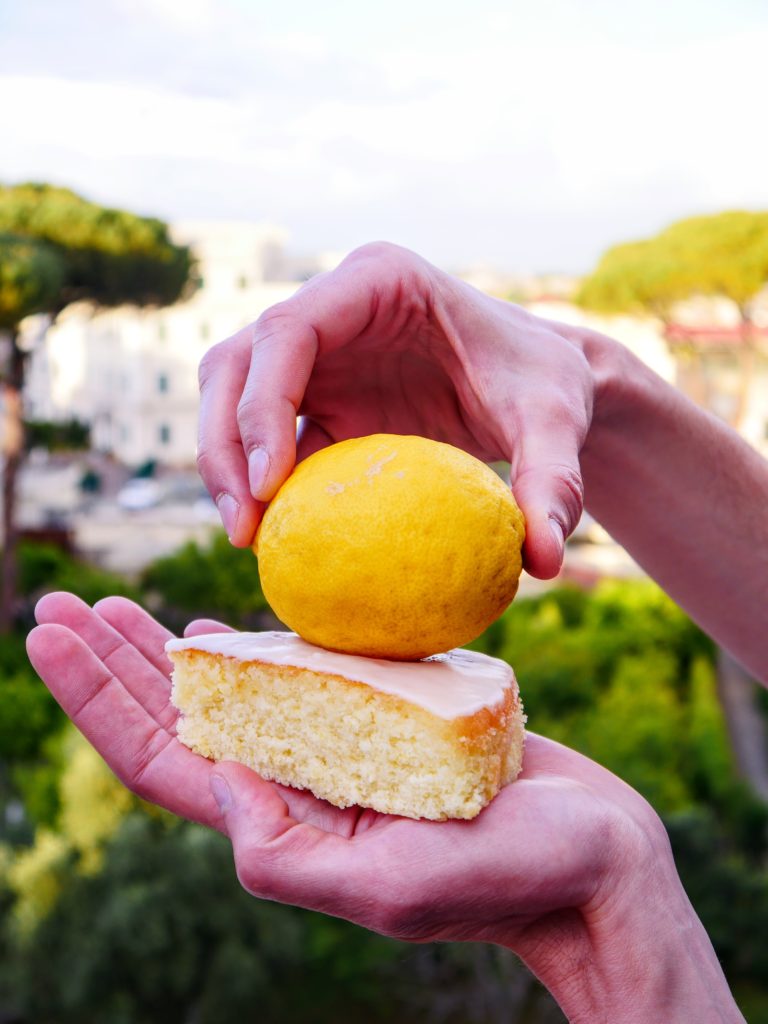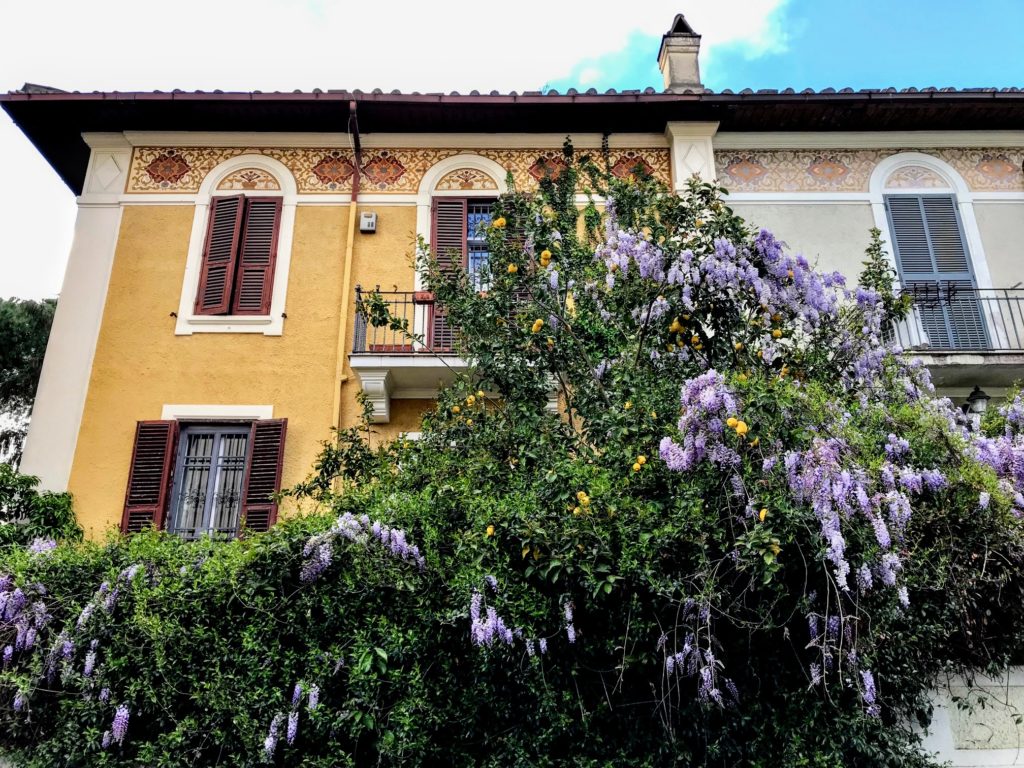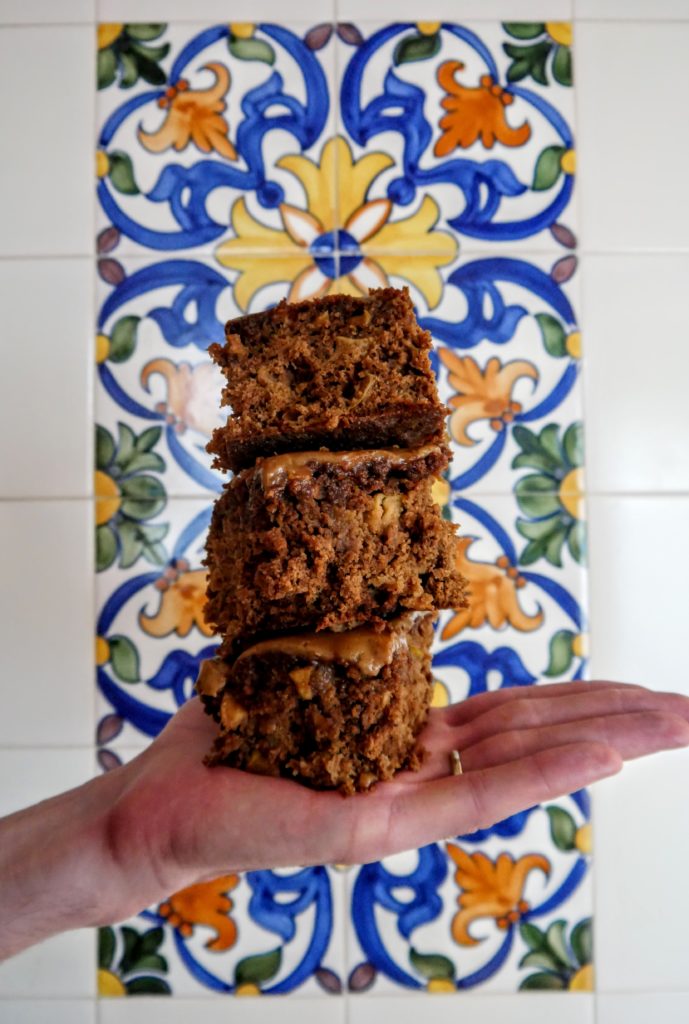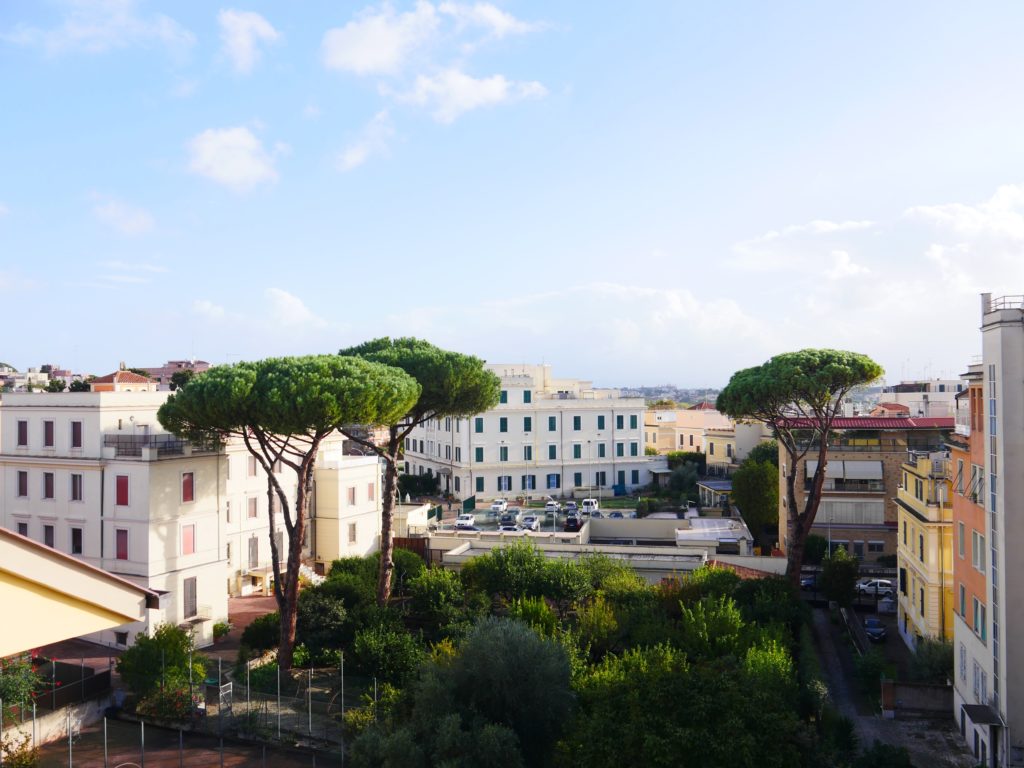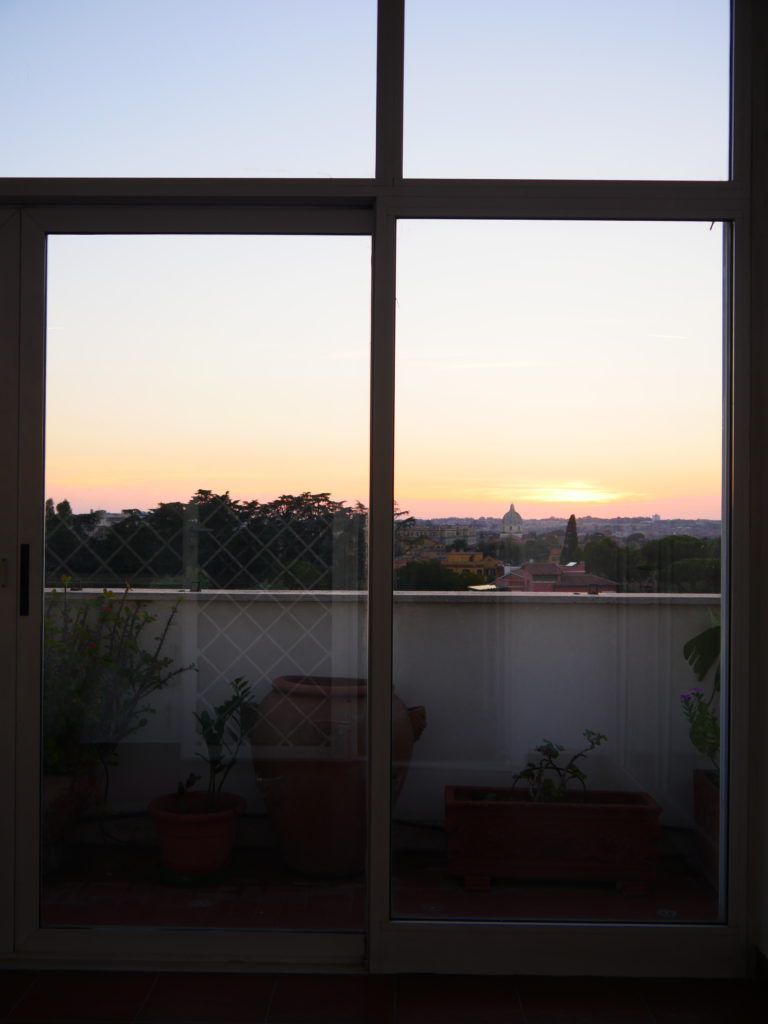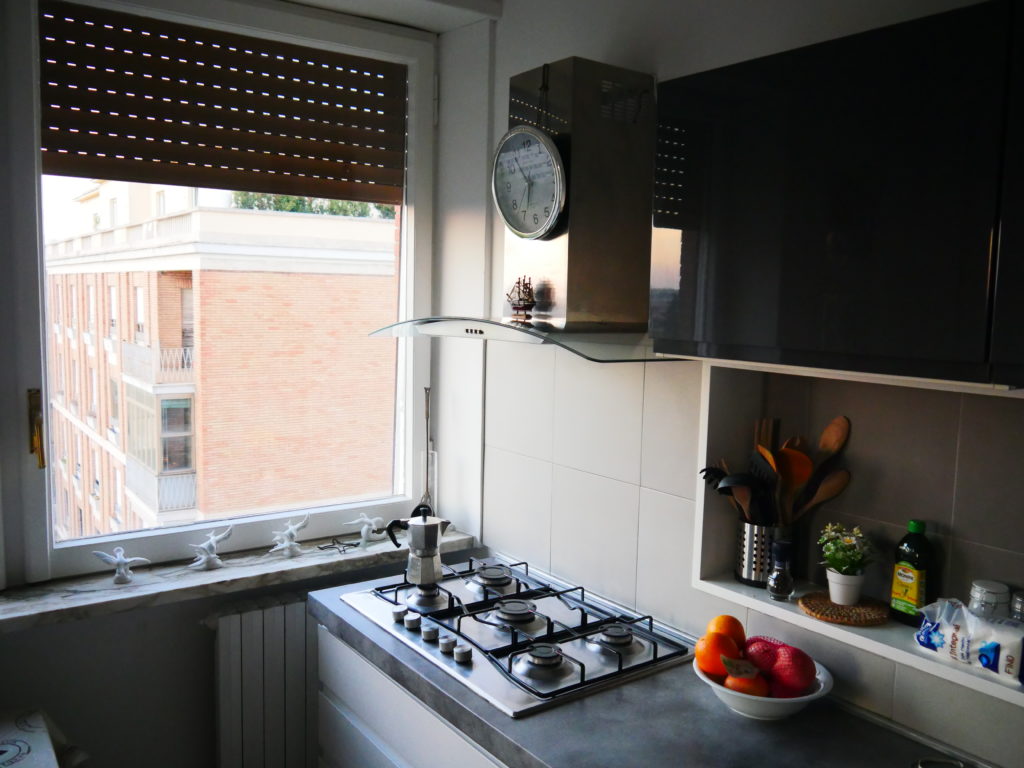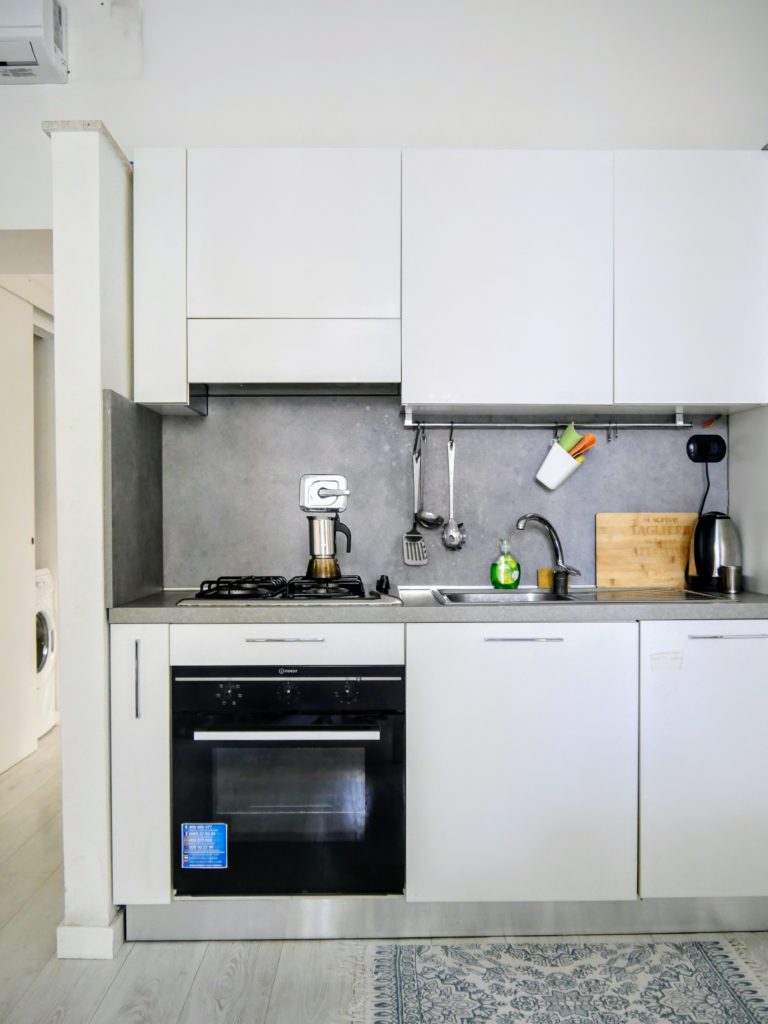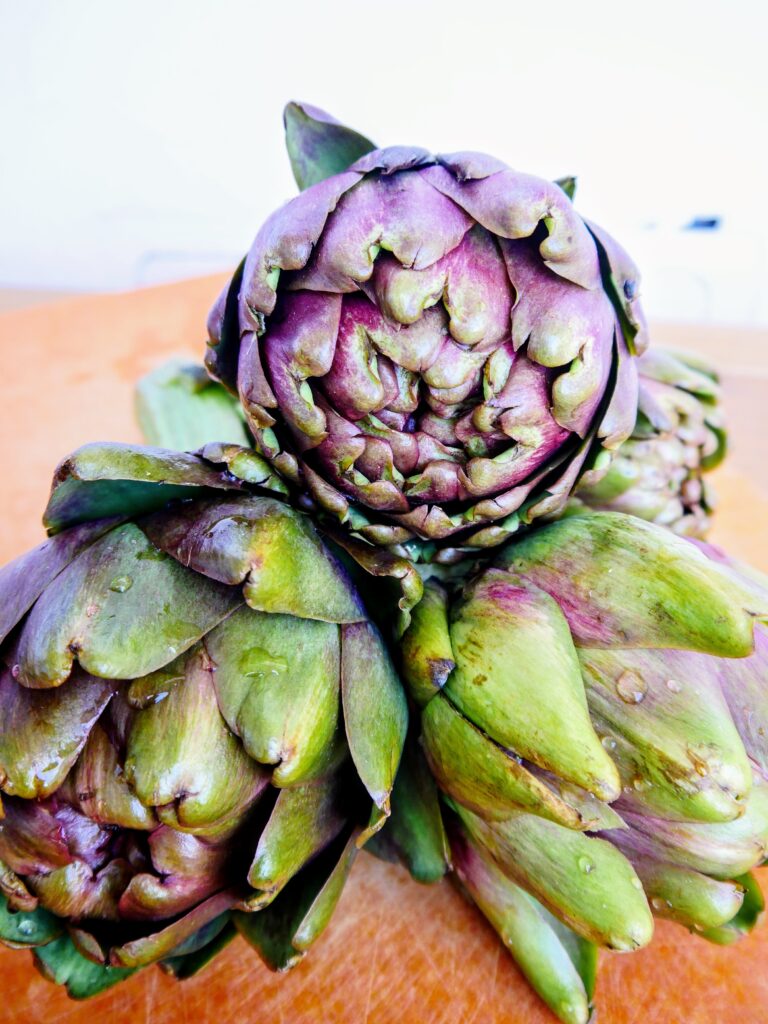
Winter farmer’s markets in D.C. were a sad sight. If you walked past the prepared food and drinks—bagels and borek, kimchi and kombucha, cured meats and whiskies—you wouldn’t find much but some slightly wrinkled cabbages, apples, and onions.
February in the markets of Rome is different. The stalls burst with all manner of citrus fruits—mandarins, lemons, oranges; it’s common to find three types of oranges at one vendor alone. The vegetables are no less a disappointment: almost-too-pretty-to-eat Romanesco, a variety of hues of cabbages, Calabrian chilis wrapped up like a bouquet of flowers, delicate curls of punterelle. And of course, the sight that brings a smile to every Roman’s eye: artichokes.
These artichokes are nothing like the ones I grew up with, which were tame, denuded things, their hearts halved or quartered and packed into cans. Roman artichokes look wild and a little unapproachable, as though the first person to eat them must have been very hungry indeed. They are green or purple, big and small; you can buy them in their full glory or already prepared, bobbing gently in a lemon-water solution and waiting to be taken home.
I was attracted to them from the beginning but also slightly intimidated. Everything our first year in Rome seemed intimidating. When artichoke season came around in 2024, we were still trying to figure out how to use Poste Italiane (still working on that) and navigate the city on public transit (sorted, mostly). Buying a vegetable—well, technically a flower—that I didn’t really know how to approach… it felt like another nearly insurmountable task at the end of a very long list of nearly insurmountable tasks.
This year feels different. There are still things about living in Italy that perplex us, and things that we actively dislike. But there are far fewer things that seem unconquerable, and other things that we laugh about or have come to love. It’s easier to play now, to experiment, so when I saw the fresh artichokes—carciofi—in the market the day after we returned from the holidays, I knew I was ready to make them myself.
Rome loves artichokes. They turn up in pastas and salads, but two of the most common preparations are alla guidia—a whole, large artichoke, deep fried—or alla romana—herb-adorned and braised. There are few times that I would ever say no to any artichoke, but carciofi alla romana are my favorite, and they’re unbelievably easy to make—not at all intimidating.
Carciofi alla romana a Roma: Go to your local produce market on the morning of the day you plan to make the dish. Get there no later than 10 a.m., or it’s possible that the artichokes will already be gone. Pick out as many as you would like—at least one per person, I think—and if they aren’t already prepared (cleaned and with the tough outer leaves stripped away), your produce vendor, Gianni, will ask if you want him to do that. Of course you will say yes, and he’ll ready them while you dither over what types of citrus to buy. It being Rome, he gives you a few stems of mentuccia, a wild herb from the mint family that is most commonly used to make carciofi alla romana, and parsley.
Thirty minutes or so before you want to eat, strip the mentuccia and parsley leaves from their stems. Finely mince the herbs and then a clove or two of garlic (garlic in Rome is stronger than what I was used to in the U.S., so I tend to go easy).
Cut a bit from the tops of the artichokes, and an inch or so from the bottom of the stems. I like to shave the stems with a vegetable peeler to make sure they aren’t woody.
Heat a skillet big enough to hold all of your carciofi lying down. When it’s hot, add a good glug of olive oil, then the garlic; sauté it lightly for a few minutes before adding the mentucciaand parsley. Add some white wine and let it cook down. Lay the carciofi in the skillet on their sides and enough water to go nearly halfway up them; season the water with a reasonable amount of salt. Cover with a lid and cook at a simmer until a knife inserted in one of the artichokes meets little resistance. Remove from the pot and drizzle with olive oil before eating.
Carciofi alla Romana non a Roma: If you don’t have a Gianni to prepare your artichokes for you, you might need to do so yourself; follow this guide for a how-to. You probably also won’t have access to mentuccia, so hack it with a mix of fresh parsley, mint, and oregano, along with some garlic (garlic in the U.S. isn’t as strong as in Italy, so I tend to use more). Otherwise, proceed accordingly.
(I should note here that the “traditional” way to make carciofi alla romana is to mix the herbs, garlic, and salt, and stuff this into the artichokes before cooking them in a pot, inverted. This will certainly make you a tasty artichoke, but after extensive research and testing—i.e., preparing artichokes at least once a week for two months—I’ve found the way above to be easier and even tastier.)
